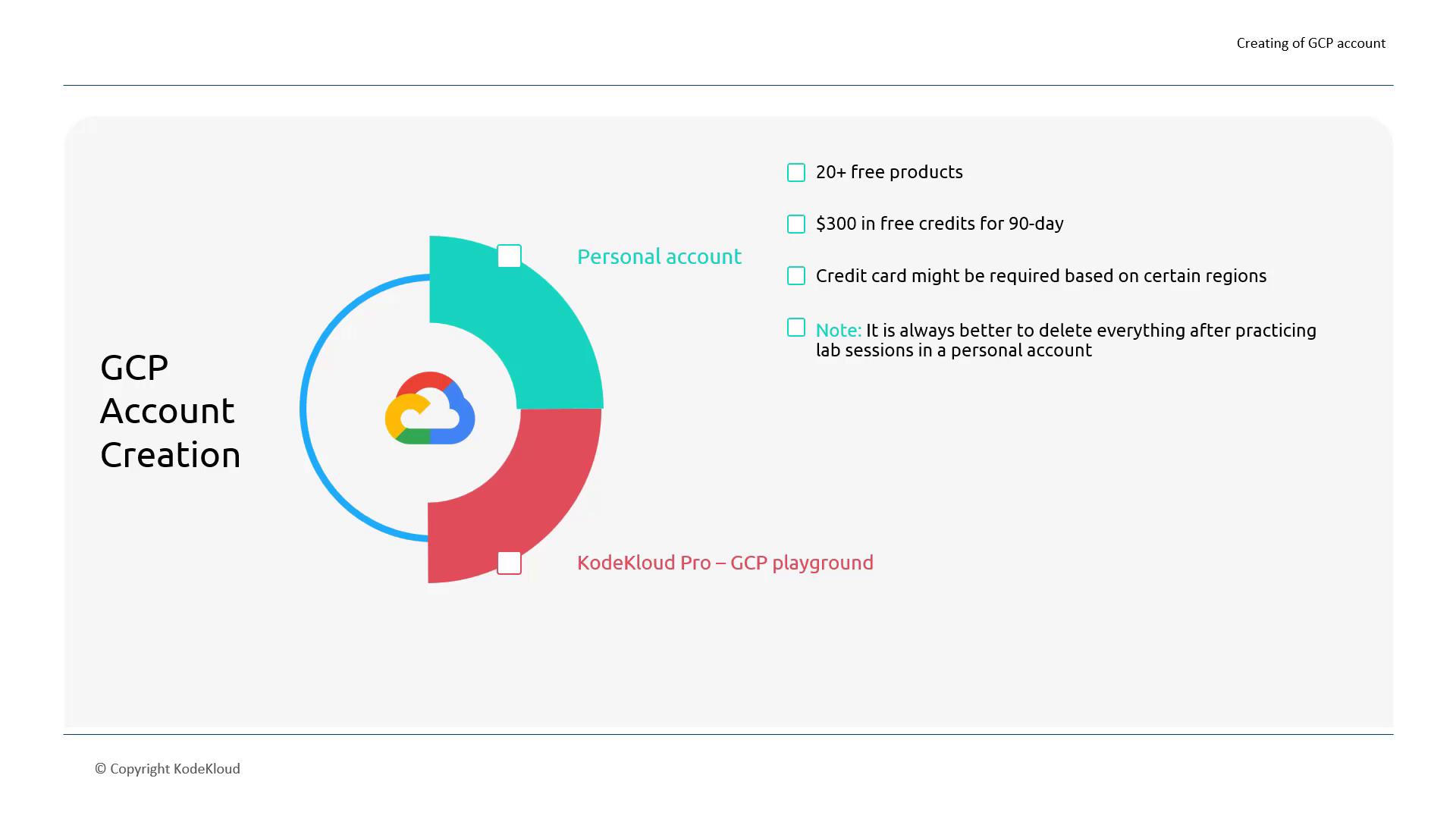GCP Cloud Digital Leader Certification
GCP account and Resource hierarchy
Creating of GCP account
Welcome to this comprehensive guide on creating a Google Cloud Platform (GCP) account. In this lesson, we will explore two primary methods to get started with GCP:
- Creating a new personal account.
- Utilizing KodeKloud Pro's integrated GCP playground.
KodeKloud Pro offers an excellent platform that provides the necessary resources to help you prepare for the Cloud Digital Leader certification.
Option 1: Create a Personal GCP Account
If you decide to create your own personal GCP account, here's what you can expect as a first-time user:
- Explore a Wide Range of Services: Access more than 20 products from the 92 available services on GCP.
- Free Credit Offer: Benefit from a complimentary credit of $300 USD, which is valid for 90 days.
- Billing Considerations: After 90 days, any further usage might incur charges.
- Sign-Up Requirements: In certain regions, you may need to provide a credit card during registration.
Important Reminder
When practicing in your lab environment, always remember to delete any resources you create to prevent unexpected charges.

Option 2: Use KodeKloud Pro
KodeKloud Pro's GCP playground provides a hassle-free environment with all the necessary services to help you excel in your certification journey without stepping into potential billing issues on your personal account.
Next Steps
In the upcoming article, we will guide you through the detailed steps needed to set up and configure your personal GCP account. Stay tuned to learn more about navigating GCP's user interface and starting your cloud computing journey.
Thank you for reading, and enjoy your cloud learning experience!
For further information, explore the following resources:
Watch Video
Watch video content